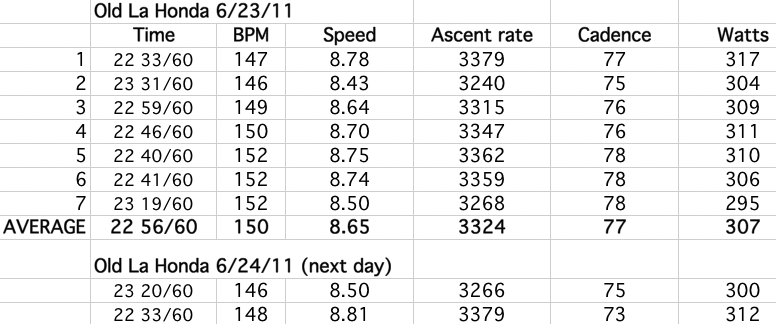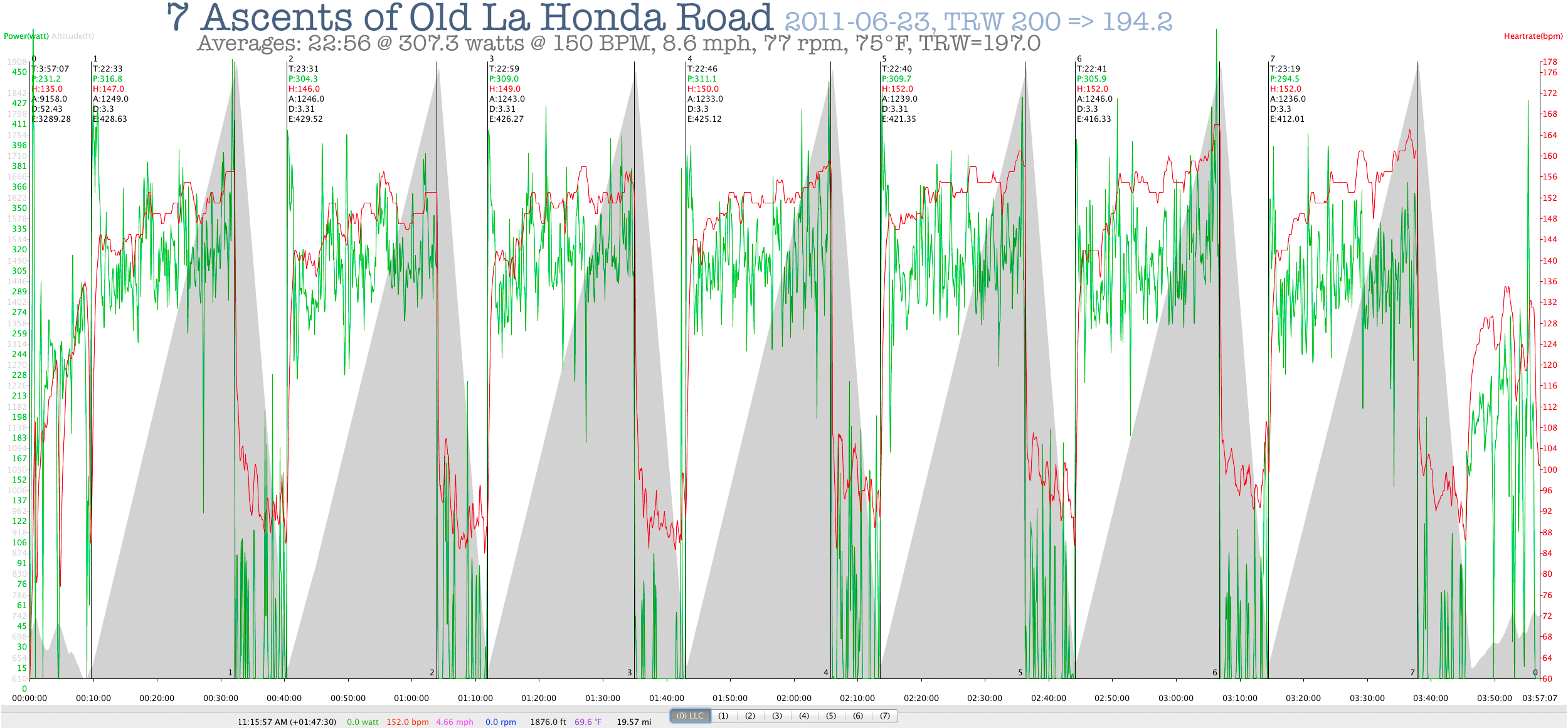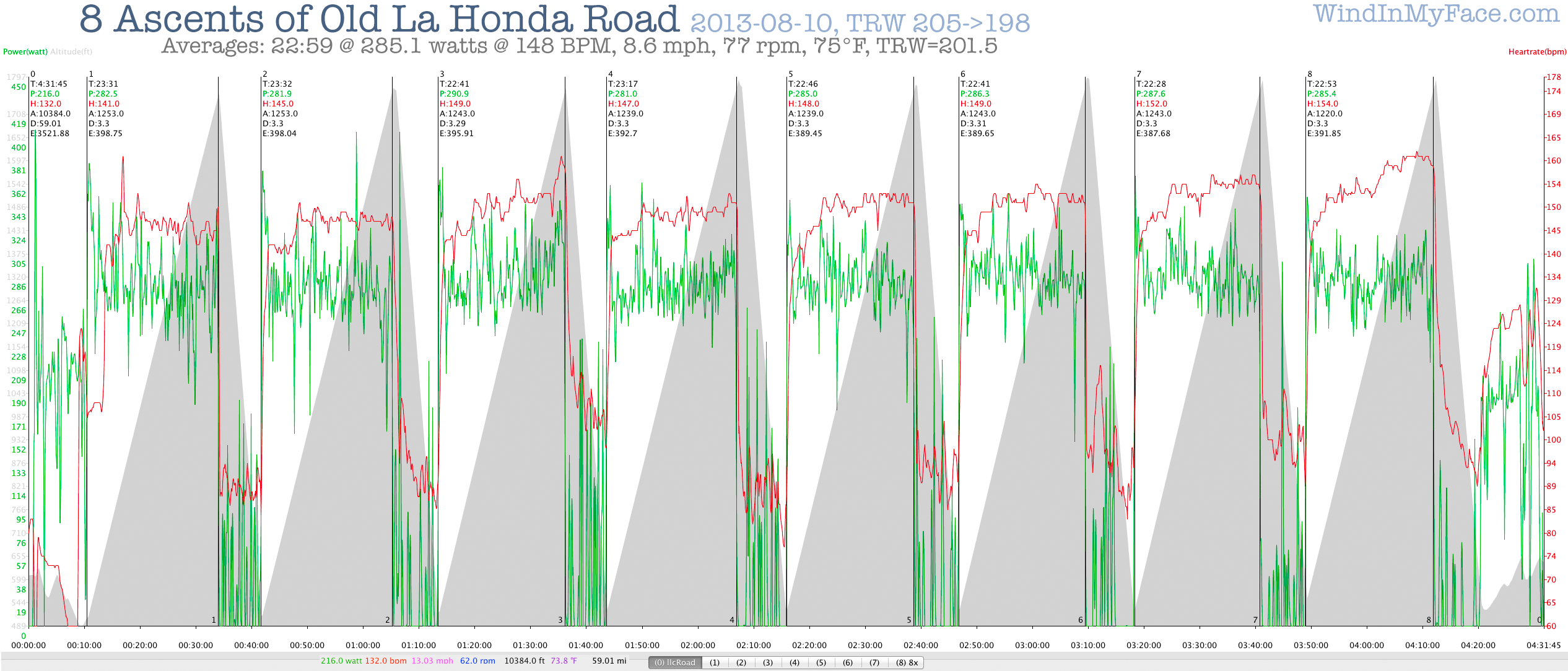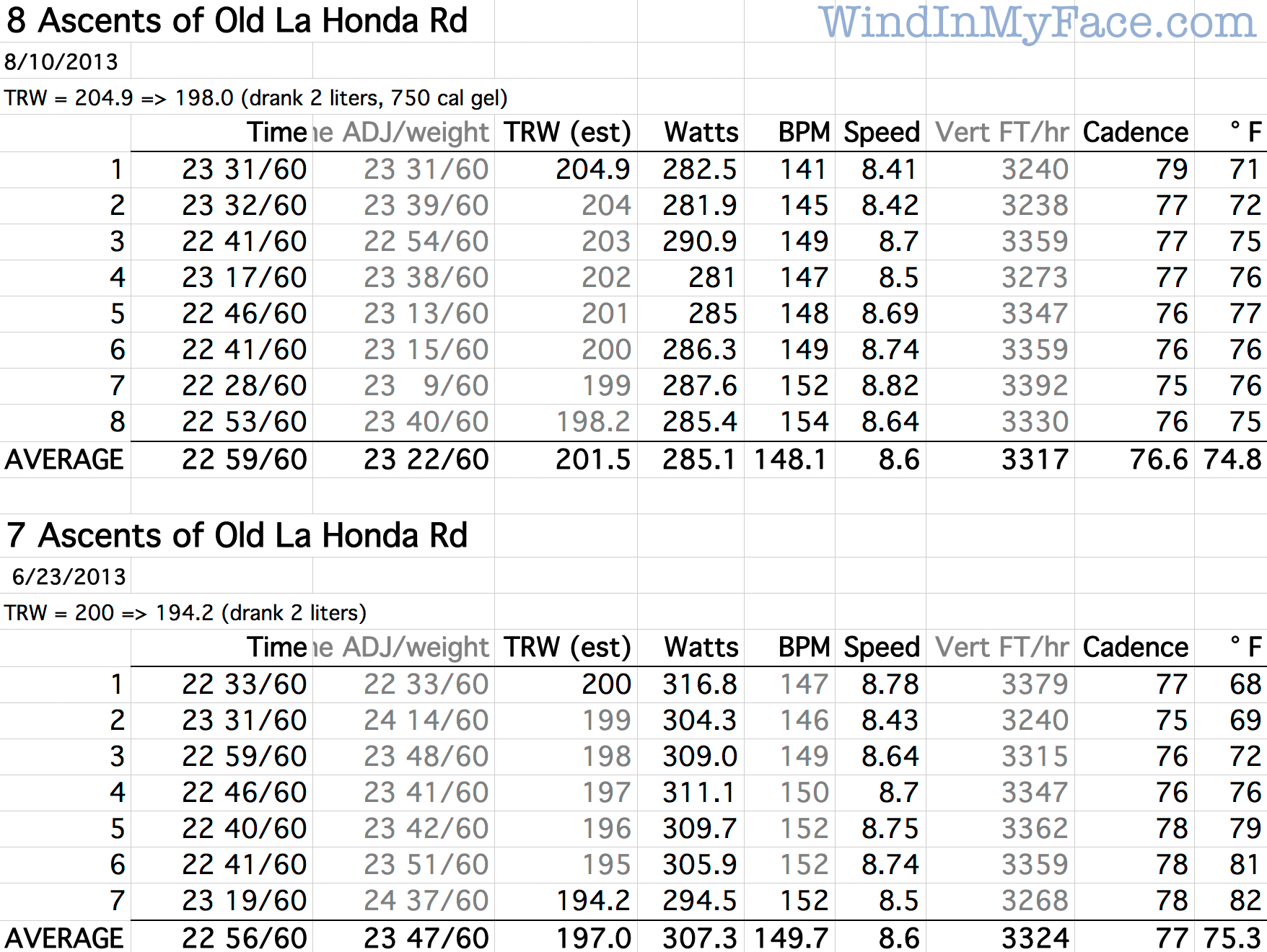
$220 SAVE $130 = 37.0% Western Digital 16.0TB Western Digital Ultrastar DC HC550 3.5-in… in Storage: Hard Drives
|

|

|

|

|
Training Using Repeated Climbs (7 Ascents of Old La Honda)
Related: Everest Challenge, hard core, heart rate, training
Repeating a fixed course during a single workout is a great way to teach oneself how to establish and maintain a pace:
- The ability to pick an effort level and consistently maintain it is key to succeeding at longer continuous challenges (know thyself). A power/watt meter is extremely helpful for such efforts.
- The quality of hydration and fueling can be deduced from the consistency (or lack thereof) from the first to the last repeat.
- One can tailor the number of repeats versus the intensity, something not possible with one fixed course spanning dissimilar terrain.
Case study
Here we examine a mid-season training day for the Everest Challenge, using my local favorite training climb, Old La Honda Road, offering a ~7% grade for an ascent of about 1270 vertical feet (from bridge to top).
Always have a workout goal in mind— the goal of this workout was simple: high intensity climbing aimed at verifying my ability to climb for long periods of time at high intensity, e.g., to complete the Everest Challenge climbs. Total ascent here was ~8900 vertical feet, which is still only 57% of just the first day of the Everest Challenge (15,465 vertical feet). However, the intensity I chose for this workout was designed to stimulate/shock my system into a higher level of performance— a deliberate choice aimed at increasing my climbing speed.
A secondary goal was to establish how badly I would dehydrate during these ascents, temperatures ranged from 57° to 82°F, which is much cooler than typical weather for the Everest Challenge, so it represents more favorable conditions.
Results
These are very good times for any age (and I was not fully rested this day), but young Cat 1 road racers could probably do sub-20 intervals.
I was carrying about 4.4 pounds of water (2 liters) for the first ascent, diminishing thereafter. I also carried 7 Gu packets (215g) and light/battery, spare tire, pump, etc, totaling about 6.4 extra pounds, dropping to somewhere around 0 pounds by the end (drank all the water and dehydrated beyond that). Those 6.4 pounds equate to an impact of about 44 seconds per ascent, quite a large impact that anyone racing ought to keep foremost in mind— take only what’s needed.
I also wanted to establish whether I could achieve reasonable times the next day (yes, but only 2 ascents, and they felt harder).
June 23, 2011
Notice the heart rate drift (dehydration) as the workout progresses: about 5 beats higher beginning to end.
Discussion continues below this chart.

BPM = beats per minute, 150 beats = 88% of max heart rate
Temperature at summit from 57° on first lap to 82° on last lap

BPM = beats per minute, 150 beats = 88% of max heart rate
August 10, 2013
Two years later (Aug 10, 2013) after a poor training season resumed quite late.
I ran out of gels and water after ascent 6 and while ascent 7 was fine, I was flagging by ascent 8, probably from no fuel and water for an hour. Notice the pronounced heart rate drift (dehydration): about 13 beats higher by the end. Some of that is exertion, but having run out of water on ascent 6, ascent 7 and 8 heart rate bumped up quickly.

BPM = beats per minute, 150 beats = 88% of max heart rate
Note that the SRM power meters are in disagreement (same average ascent times withing 3 seconds (!), but 5 pounds lighter and 22 watts more power (2011) appears to be an accuracy error with one of the power meters to the tune of ~7%). It’s possible that the slope and/or zero offset were miscalibrated, so this cannot be taken as “scientific”.

What I learned
This workout yielded clear and actionable conclusions:
- To have a chance of maintaining this pace for 15000 vertical feet, I’ll have to drop another 5 pounds of body weight and/or become more fit. Or I’ll have to slacken off the pace.
- In spite of drinking 2 liters of water over 4 hours, I still came home 4 pounds lighter than when I started, indicating dehydration (some urine and some body fat and glycogen are consumed, so not a full 4 pounds worth of water). But still, it is clear that I did not drink enough. My rule of thumb is about 1 liter per hour, and for this effort I clearly did not take enough fluid, and that could have increased fatigue, not to mention becoming a serious problem should the workout have continued another hour or two.
- Fueling was one Gu energy gel per ascent (scarf a Gu at top, drink 1/3 liter or so, head down). This proved adequate, but perhaps slightly more fueling could be helpful. Future workouts should investigate a 50% higher fueling approach. On the other hand, maximum endurance fitness means the ability to burn fat for almost all energy needs even at very high heart rates.
- The last lap took some effort as I was clearly getting fatigued. Was this due to dehydration? To rule that out, another workout of this type is needed, one in which I increase my fluid intake by at least 50%, and perhaps take a few more Gus.
- Recovery the 2nd day was far from complete, the ascents felt much harder, but I was able to achieve similar times for two ascents. The 3rd day my legs were toast, and I was two minutes off the pace. But the 4th day four ascents including a 4th of 20:56 were possible, showing good recovery— just not the rapid recovery of being 20 years younger.
Seagate 22TB IronWolf Pro 7200 rpm SATA III 3.5" Internal NAS HDD (CMR)
SAVE $100



